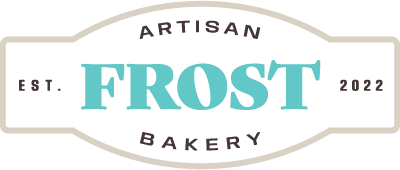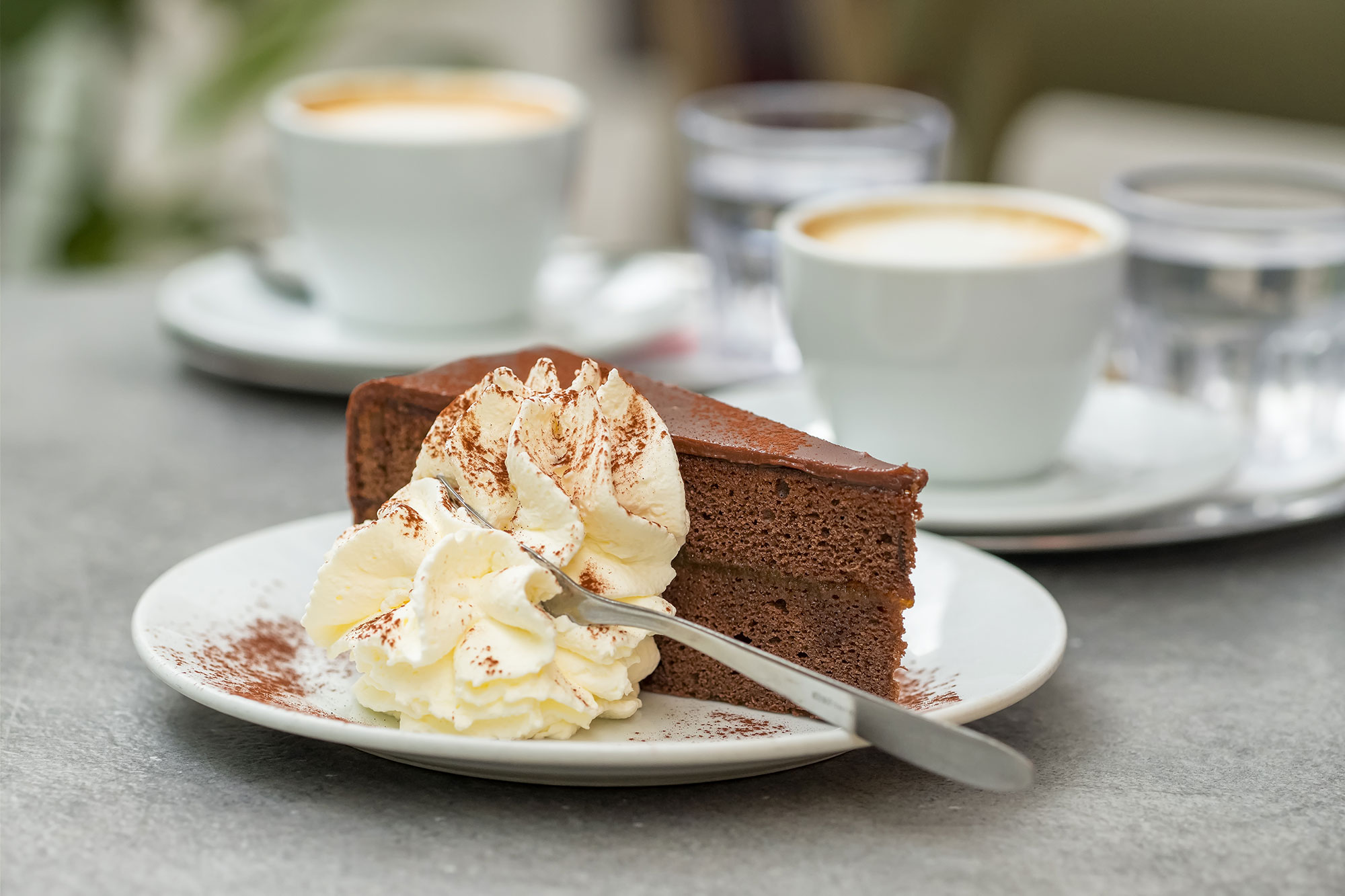This information is for inspirational purposes only. To learn more about Frost Artisan Bakery’s current menu and custom baked goods, please contact us.
Would you like a slice of cake or a slice or torte? How about a piece of tart? While cakes, tarts, and tortes find their way onto plates for many types of occasions, you may be wondering what makes them unique and what a torte is, exactly. Dig into the delicious details as we demystify cakes, tarts, and tortes.
Tart vs. Torte
They both begin with the letter T, so what’s the difference between a tart and a torte?
A tart has a filling inside a thin pastry shell. The pasty shell is baked in a shallow baking pan with a removable bottom (sometimes called a quiche pan) or in a freestanding baker’s ring set atop parchment paper and a baking sheet.
Tart fillings can be either savory or sweet. Sometimes, tarts have decorative toppings, but one thing they don’t have is a top crust. Tarts can be several sizes—ranging from small, individual serving sizes often called tartlets—to full-size nine- or 10-inch tarts.
A torte is something completely different. The word is generally used to describe a dense, rich cake made with ground nuts instead of all-purpose or cake flour. Most tortes are assembled with several layers. The layers are fused together with jam, frosting, or other flavor-packed fillings.
Torte vs. Cake
In Europe, the word torte is commonly used to describe any round cake, regardless of how it’s made or decorated. However, in the United States, the two desserts are distinct.
What makes a torte a torte? Here are some distinguishing features that can help you tell the difference between a cake and a torte:
- Ingredients: A torte generally uses nut flour, such as almond flour, instead of conventional types of flour. The addition of nut flour makes tortes denser than cakes.
- Size: Since tortes are made without all-purpose or cake flour, they won’t rise to the heights that traditional cakes do in the oven.
- Decoration: While many people consider tortes to be “fancy,” by their nature, tortes bear minimal decorations. They’re usually decorated with a dusting of confectioners’ sugar, a simple layer of frosting, or a glaze. Cakes are generally more festively decorated, with frosting, cake toppers, or edible flowers.
What Are Some Examples of Tortes?
The following represent examples of tortes that have remained popular over time:
Linzer Torte
This dessert straddles the line between torte and tart. It features a pastry crust made with nuts that’s covered with raspberry jam and topped with a lattice-like weaving. While almonds are traditionally used in the crust, hazelnuts or pecans are also common additions.
Linzer tortes, which take their name from the city of Linz, Austria, where they originate, are popular Christmas confections served throughout Central and Eastern Europe.
Sacher Torte
The Sacher torte was first developed at the Hotel Sacher in Vienna during the mid-19th century.
In this torte, a dense chocolate cake is brushed with a warm jam, such as apricot, and covered with a coating of dark chocolate ganache. While this decadent dessert is delicious served just as is, it also lends itself to spectacular garnishes and dollops of whipped cream accompanying each slice.
Taste a Slice of the Sweet Life With Frost
No matter the occasion, cakes, tarts, and tortes make any event extra special. At Frost Artisan Bakery, we offer several flavors of tarts, a flourless chocolate torte, and specialty cakes to help you celebrate the sweet life. Call or stop in today to treat yourself to our freshly baked desserts.


